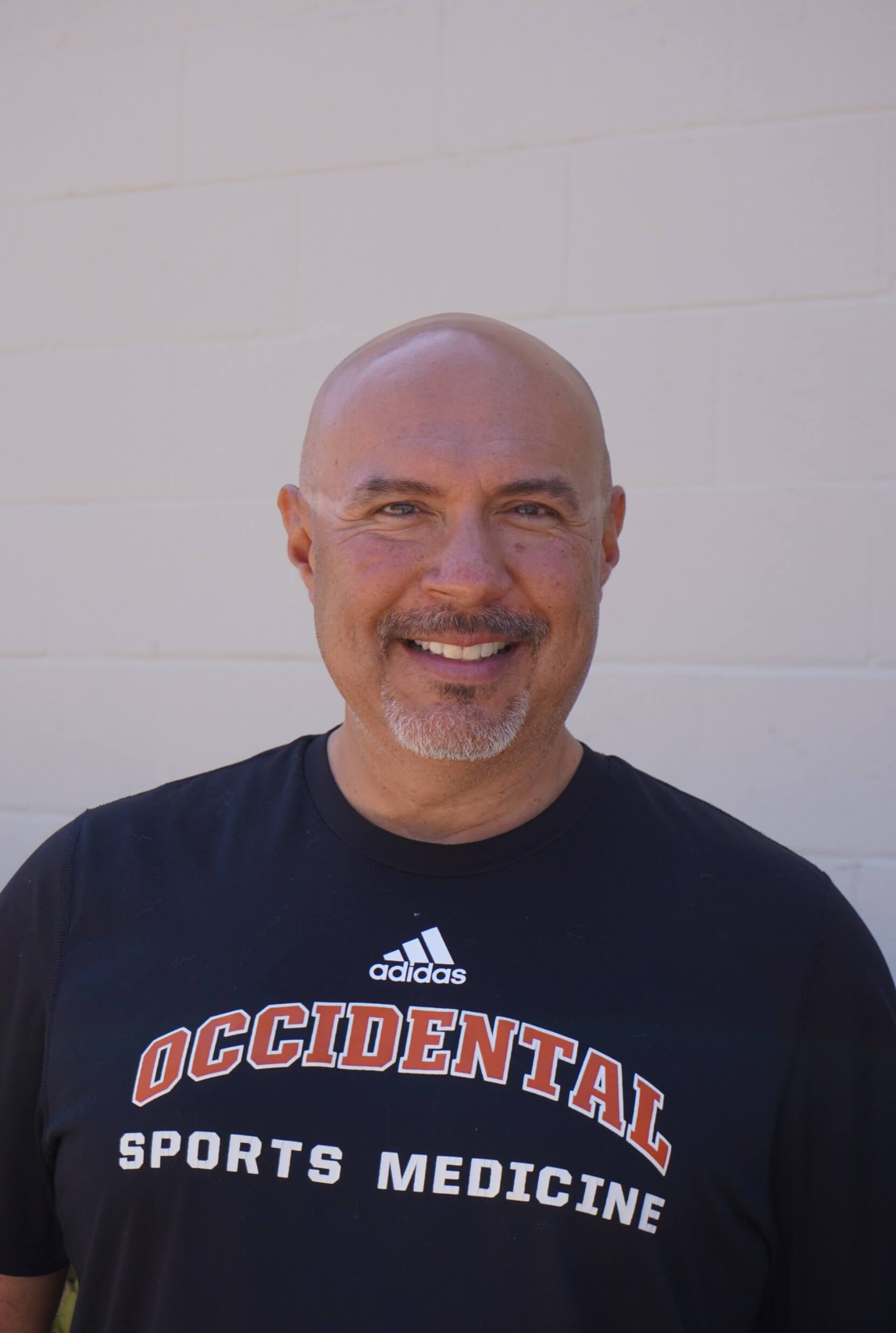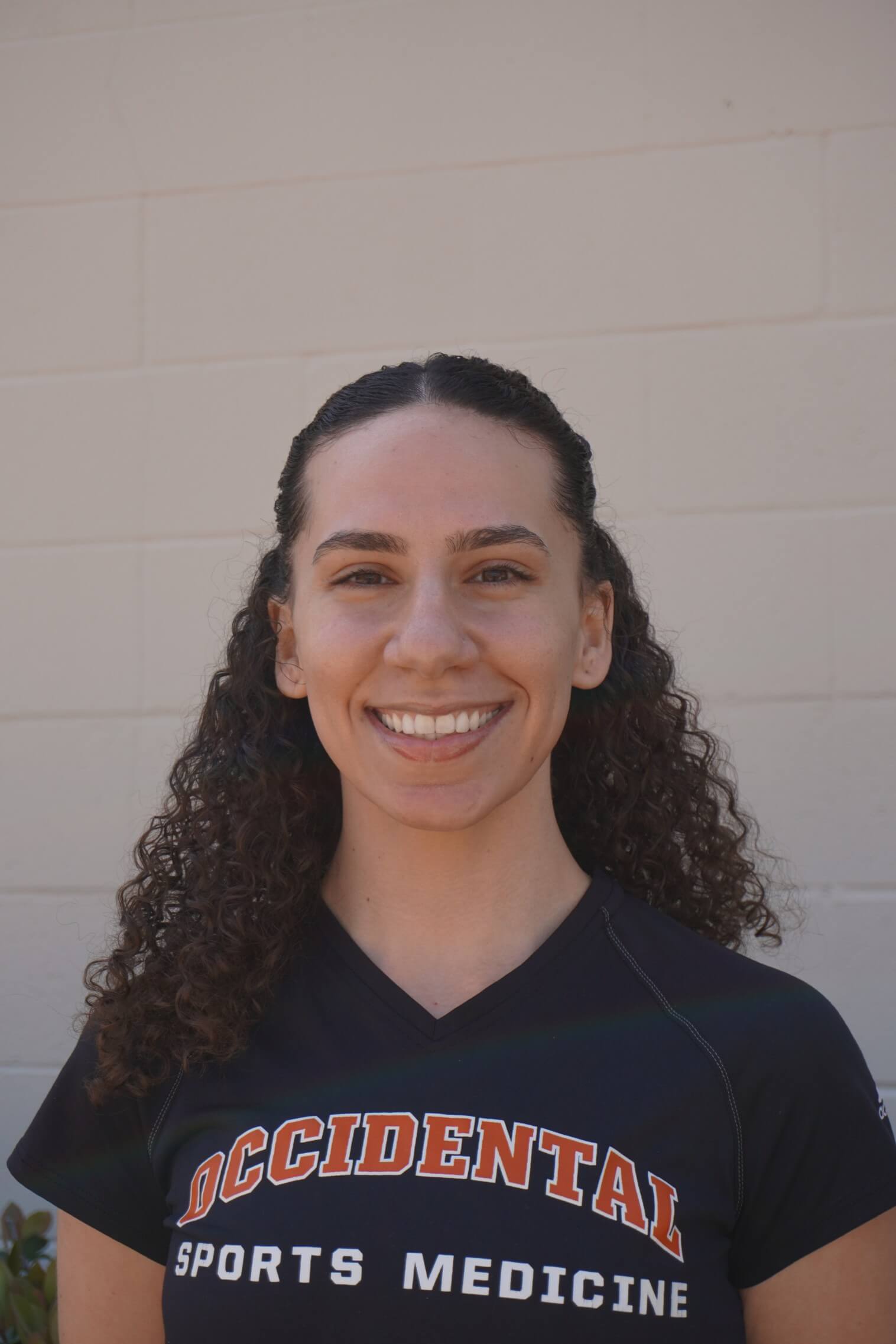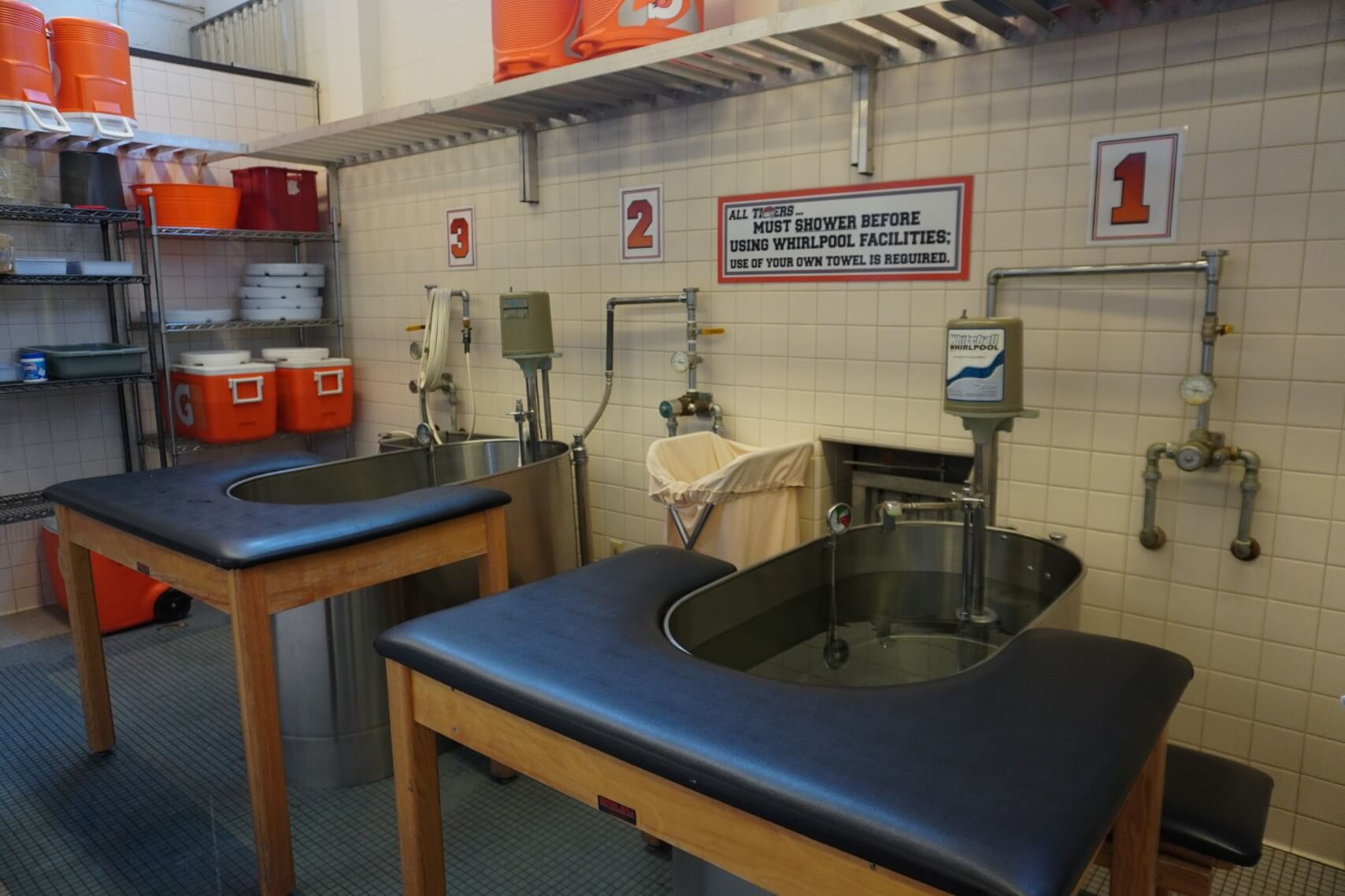
The Occidental Sports Medicine department provides intercollegiate student-athletes injury care and prevention services. Their work helps to keep Occidental’s athletes healthy throughout the demands and rigor of their seasons. Because of the nature of athletic contests, athletic trainers work both early in the morning and late into the evening to support Occidental’s athletic program.

Joseph Gonzalez, the assistant athletic director for sports medicine at Occidental and leader of the athletic trainers’ staff, said the training room operates most of the day.
“Typically, our athletic training room opens around 6 a.m. or 7 a.m. when we have our morning practices,” Gonzalez said via email. “The majority of our team practices begin around 5 p.m., so we are busy with pre-practice treatments and preparations from 3–5 p.m. If there are evening home competitions, we’ll provide medical services for those until they finish which is around 9:30 p.m.”
Erica De Leon is a part-time athletic trainer for Occidental and works early during the morning shift in order to accommodate the teams that have practice in the morning.
“When evaluating a student athlete’s readiness to play, first we determine their pain level, their strength level compared to their non injured side. Also, I ask questions to see if they feel confident and prepared to return to play,” De Leon said. “I always look at the psychological side of it too, because sometimes an athlete can have anxiety to go back to play because of the injury and they don’t want to get hurt again.”

While an undergrad at California State University, Northridge, Ranah Elzaiat said she volunteered in sports medicine which solidified her passion for the subject and led her to pursue a master’s program at Azusa Pacific University.
“Being proactive in self-care is paramount for injury prevention among athletes,” Elzaiat said via email. “Here’s some actionable advice: prioritize warm-up and cool-down, stay hydrated and nourished, prioritize sleep. Listen to your body: Pay attention to any signs of discomfort, fatigue, or pain and respond accordingly by adjusting training intensity, seeking appropriate rest or consulting with a healthcare professional if necessary. By incorporating these proactive measures into their routine, athletes can significantly reduce the risk of injuries and maintain peak performance levels.”
According to Gonzalez, students interested in pursuing a career in sports medicine should look toward graduate-level programs.
“Students interested in becoming certified athletic trainers will need to graduate from a master’s degree program in athletic training, and then pass the Board of Certification exam,” Gonzalez said via email.
Tyler Auston joined the Occidental sports medicine staff in July 2022 after working as a certified athletic trainer at El Dorado High School in Placentia, CA, and a part-time physical therapist aide at Caldwell Physical Therapy and Sports Rehabilitation.
“A typical day (without games) consists of working with wonderful Oxy student-athletes, soft tissue mobilizations, administrative duties, injury evaluations and creating treatment plans,” Auston said via email. “But most importantly I remain on guard for any emergency that may happen!”

According to De Leon, when a student-athlete is injured, the treatment is adjusted according to the physical demands of each particular injury.
“Depending on the injury, we do a full evaluation, which includes checking where the injury is coming from and what’s causing the injury,” De Leon said. “So, we do special tests, we check their muscle, we check their range of motion, we check their muscle strength and we always compare it to the non-injured side just to see what’s off. Everyone has their own anatomy so that’s important to keep in mind.”
Elzaiat said that the most difficult aspect of working as an athletic trainer is having to deliver bad news to the athletes.
“One of the most challenging aspects of working in sports medicine is delivering difficult news to athletes, such as informing them that their season is over due to injury,” Elzaiat said via email. “It’s a delicate balance of providing honest and compassionate communication while also supporting them emotionally through what can be a devastating realization. Helping athletes navigate the emotional and psychological impact of such news, while also discussing rehabilitation and future goals, requires empathy, sensitivity and effective communication skills.”
Gonzalez said that the most fulfilling part of his job is getting to work with students and the sports medicine staff.
“We have a great staff of team physicians and physical therapists; they are the best at what they do and are committed to our standard of providing the best health care for our students,” Gonzalez said. “Additionally, our coaches are committed to winning and also want the very best for our students. The most challenging aspect of our work is our limited staff of full-time athletic trainers. We often feel spread too thin in the good work that we strive to do; but we are always working on creative solutions to do the best with the resources we have.”
Contact Theo Wilton at twilton@oxy.edu
![]()


































